16 unique sites in Poland were inscribed on the UNESCO World Cultural and Natural Heritage List – they’re a “must see” for anyone going to Poland. Cracow and Wieliczka Salt Mines were the first to enter the list as early as in 1978. The newest addition is the Krzemionki prehistoric striped flint mining region, which was inscribed in 2019.

1. Historic Centre of Krakow
The historic centre of Krakow was the first site from Poland to be inscribed on the UNESCO World Heritage List. The 13th-century merchant town has Europe’s largest market place and numerous historical houses, palaces and churches.
Evidence of the town’s magnificent history is provided by the Jagellonian University, the Renaissance Royal Castle and the Gothic cathedral on the Wawel Hill, where the kings of Poland were buried, as well as the medieval Jewish district of Kazimierz, which acted as an independent city from the Middle Ages up until the 19thcentury. For centuries now, an integral part of the Main Market Square’s identity have been the Sukiennice, the cloth hall housing a myriad of shopping stalls, St Mary’s Church with its sculpted alter by Veit Stoss and the daily trumpet call played from the church tower, the Town Hall Tower and the tiny Church of St. Wojciech. In 2013, the market place in Krakow was proclaimed the most beautiful square in the world by the Lonely Planet guide.
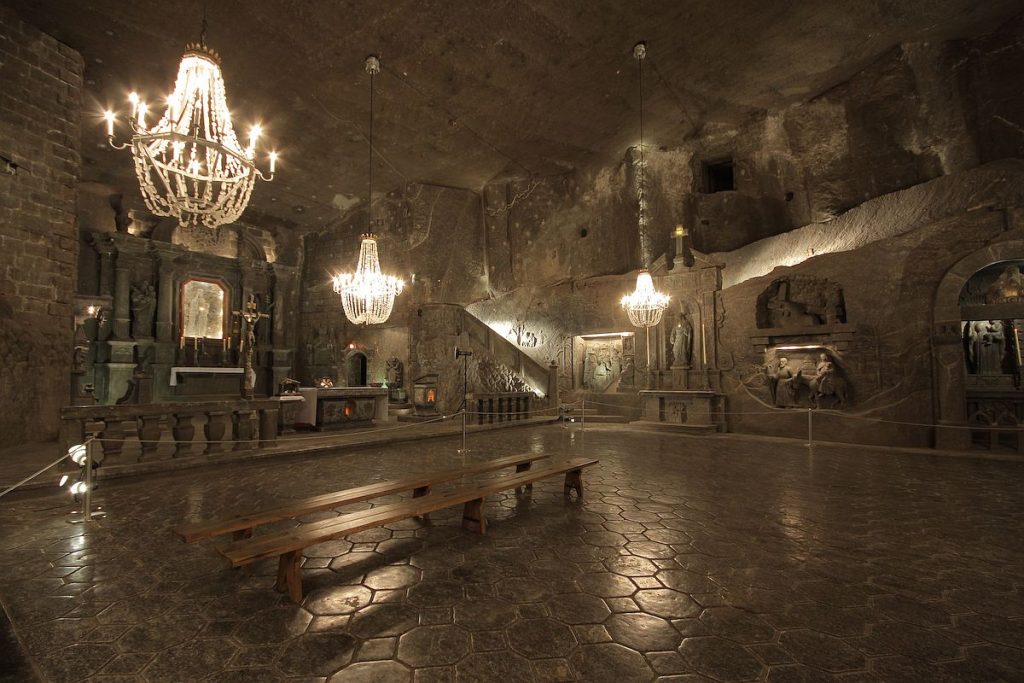
2. Royal Salt Mines in Wieliczka and Bochnia
The Wieliczka mine is the oldest operating salt mine in the world. It illustrates the historic stages of the development of mining techniques in Europe during different historical periods. It encompasses 9 levels, 2040 chambers and 360 km of galleries that form a mysterious labyrinth. Visitors ake their way past lakes, unique on a global scale, altars, statues and entire underground chapels with reliefs and chandeliers sculpted in salt, which transfer them to an amazing, fairy-tale world.. The mine houses an underground post office, restaurant, cinema, tennis court, and sanatorium which offers allergy and asthma treatment. It is a venue for concerts, theatre performances, and balls. You will find here the world’s deepest lying hotel at approx. 125 m.
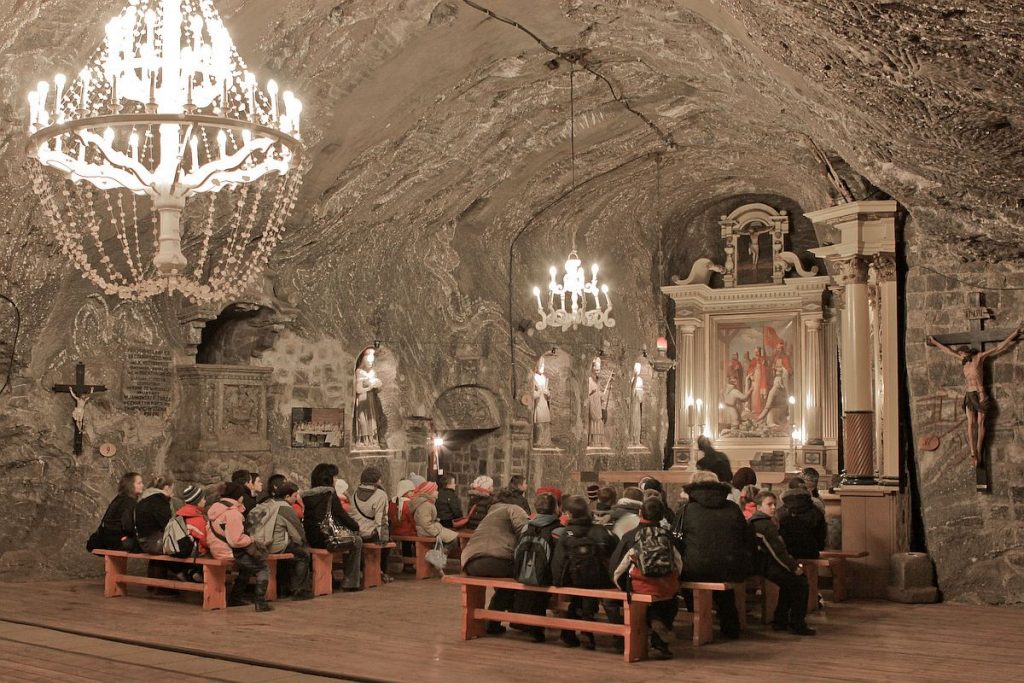
The Bochnia Salt Mine was opened in the 13thcentury, 40 years before the mine in Wieliczka.The pits of the salt mine in Bochnia encompass unique chambers of a characteristic shape and geological structure, such as the Ważyn chamber – the largest man-made underground room in Europe with a healing microclimate. The excavations of the Bochnia salt mine contain unique chambers with a characteristic geological shape and layout, such as the Ważyn chamber – the largest man-made underground room in Europe, with a healing microclimate. You can admire the chapels carved in stone here. Tourist attractions of the Bochnia Mine include an underground boat and cableway rides, and a 140-metre long slide connecting the mine’s two levels.
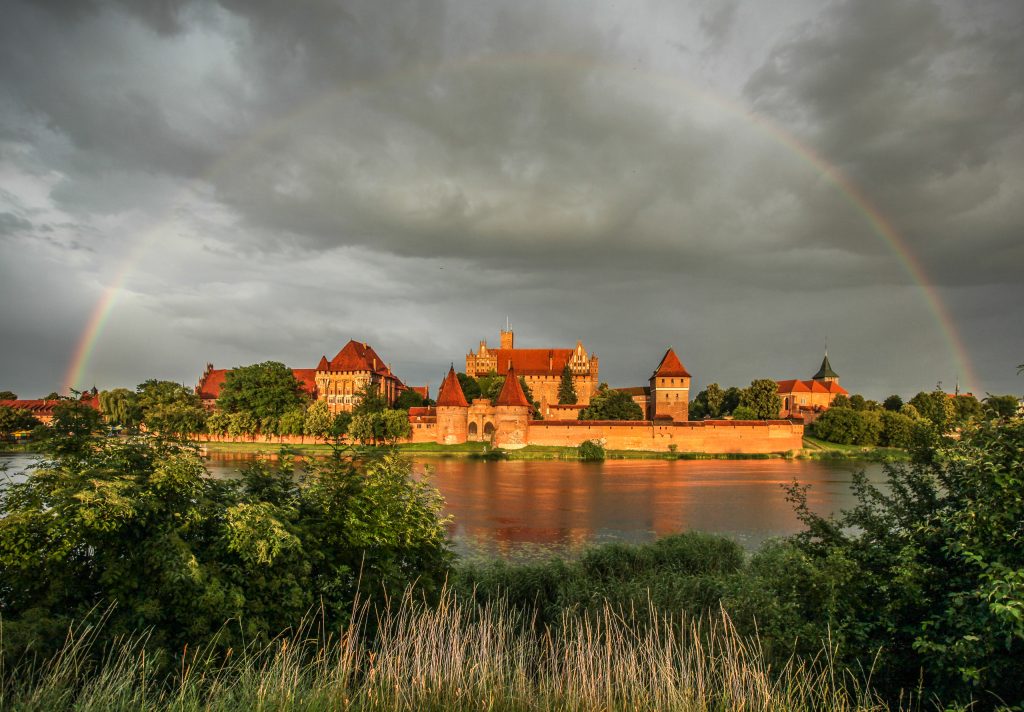
3. Castle of the Teutonic Order in Malbork
The Castle of the Teutonic Order in Malbork was built at the turn of the 13thand 14thcentury and is the largest Gothic fortress in Europe. It consists of three castles and occupies 20 hectares. From 1309, it served as the seat of the Grand Master of the Teutonic Order.
This piece of architecture is unique in the world, featuring as it does a number of technical solutions which were ahead of their time, in particular the design of vaults, gables and portals, and the use of sculptures and ornaments. The techniques employed at Malbork were later put to use in many castles of the Teutonic Order, as well as in dozens of other Gothic buildings across North-Eastern Europe.
Today, the castle plays host to knightly tournaments, monumental shows, and battle re-enactments, the most noteworthy of which is the impressive siege of Malbork.
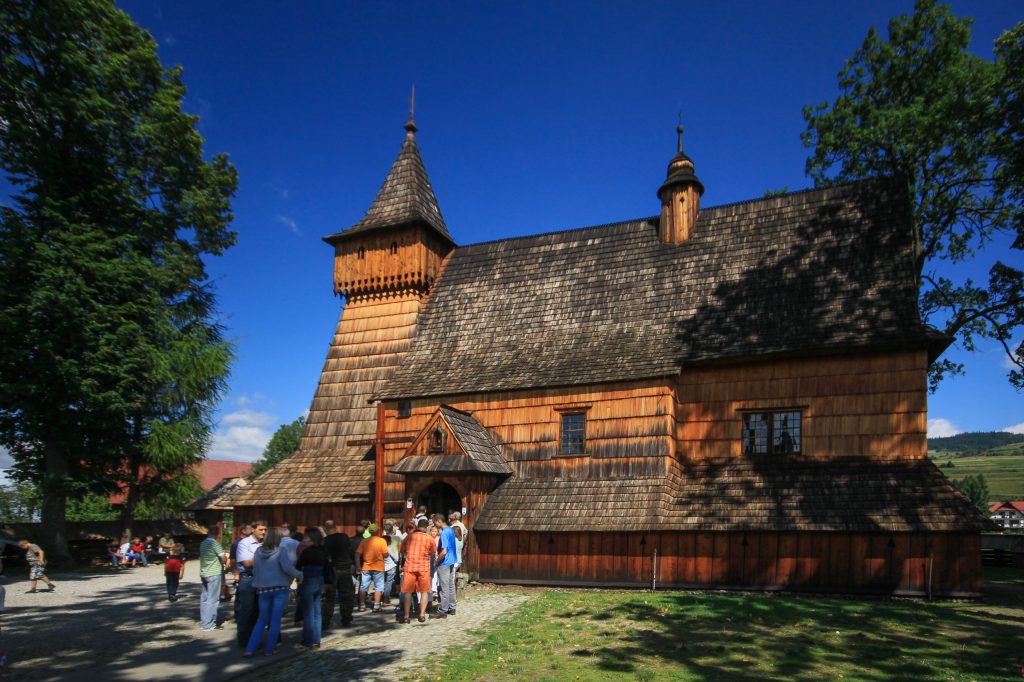
4. Wooden churches of southern Lesser Poland – Binarowa, Blizne, Debno, Haczow, Lipnica Murowana, Sekowa
The wooden churches of southern Lesser Poland represent outstanding examples of the different aspects of medieval church-building traditions in Roman Catholic culture. They were built using the horizontal log technique, common in eastern and northern Europe since the Middle Ages.The churches represent the oldest cluster of wooden temples in Europe, predated only by the Stavkirke – Norwegian stave churches. These unique churches with old paintings and sculptures were sponsored by noble families.
The entire Trail of Wooden Architecture in Lesser Poland is 1500 km long.
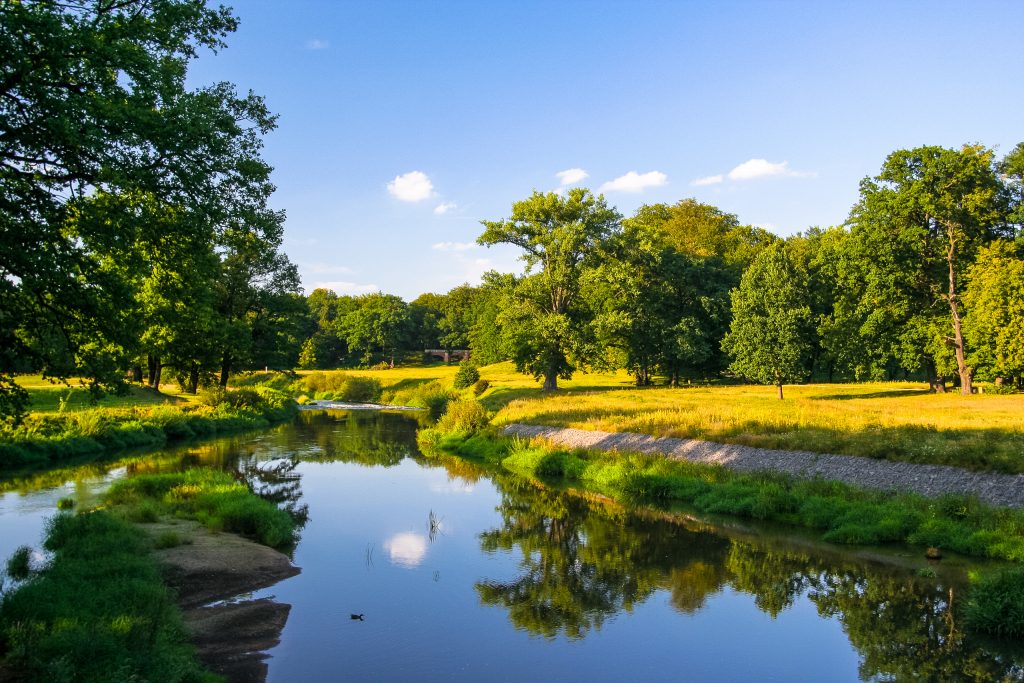
5. Muskauer Park
Muskauer Park is one of Europe’s largest historic parks to be laid out as an English landscape garden. As one of the major achievements of European gardening, the park influenced the development of landscape architecture in Europe and America. Designed as a ‘painting with plants’, it uses local plants to enhance the inherent qualities of the existing landscape and encourages charming walks.The park stretches across both sides of the Nysa Luzycka river, flowing along the Polish-German border. It was founded by the Prussian prince Herman von Puckler-Muskau and built between 1815 and 1845, covering an area of about 1000 hectares, with 800 hectares located in Poland.
Admission is free to the Polish and German sections of the garden. It is open 24 hours a day, and can be toured by bike.
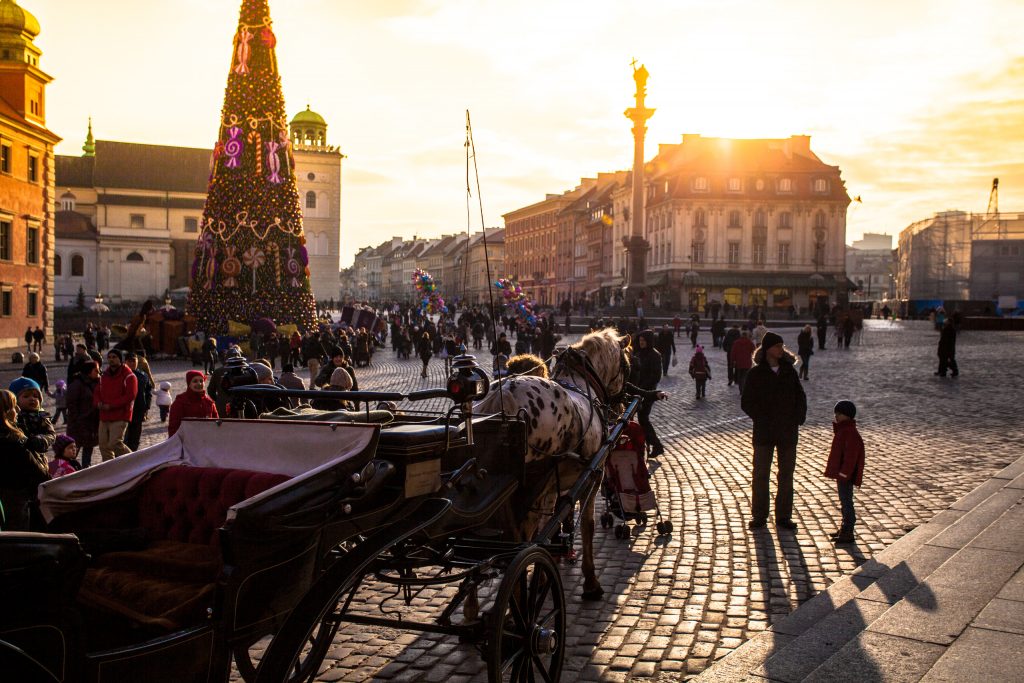
6. Historic Centre of Warsaw
The historic centre of Warsaw is a unique example of a planned near-total reconstruction of a span of history covering the 13th to the 20th century. The consensus within modern-day conservation circles has tended to be that the reconstruction or precise rebuilding of destroyed buildings is a falsification of the past. Warsaw was a rare exception to this unwritten rule and a decision was made to rebuild the Old Town to boost morale and accommodate the Polish people’s wish to raise their ruined city from the ashes. During the Warsaw Uprising in August 1944, more than 85% of Warsaw’s historic centre was reduced to ruins by Nazi troops. It was set ablaze, blown up. Colourful tenement houses were surrounded with battlements, and churches, palaces, the Market Place as well as the Royal Caste were all totally destroyed. The decision to rebuild Warsaw as the country’s capital city was taken as early as January 1945. Over five years, they reconstructed the most beautiful district of the capital city.. The reconstruction was possible due to preserved historic documentation, for example the paintings and drawings by Canaletto.
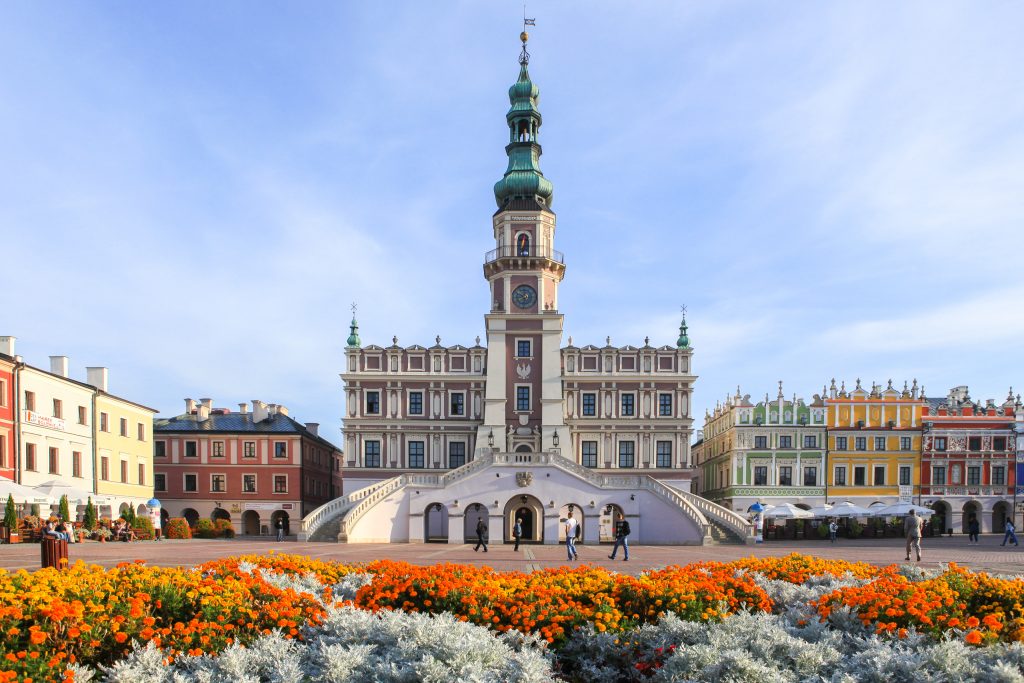
7. Old City of Zamość
The city was founded in the 16thcentury by Chancellor Jan Zamoyski on the trade route connecting western and northern Europe with the Black Sea. The city was built in the middle of nowhere, according to Italian theories of an ideal city accordingto the urban and architectural plan of Bernardo Morando of Padua, commissioned by Jan Zamoyski in 1580.
Zamosc is sometimes called the “pearl of the Renaissance” for several reasons: the city is surrounded by typical Renaissance bastion fortifications and tenements from that time, accounting the majority of buildings in Zamosc, while its cathedral ranks among the most outstanding achievements of late Renaissance architecture.
The symbol of Zamosc is its Town Hall crowned with the attic with a fan-shaped stariway and a tall clock tower, from which a ceremonial bugle call is played at noon.

8. German Nazi Concentration Camp in occupied Poland 1940–1945
Auschwitz-Birkenau was the largest extermination camp built by the Germans during World War II. It is a testimony of the genocide committed by the Nazis during World War II. Looking at the fortified walls, barbed wire, platforms, barracks, gallows, gas chambers and cremation ovens, it is difficult to imagine that “people brought this fate upon people”, as Polish writer Zofia Nalkowska wrote.Auschwitz-Birkenau was the principal and most notorious of the six concentration and extermination camps established by Nazi Germany to implement their Final Solution policy, aimed at mass murder of the Jewish people in Europe. The camp was built in Nazi German-occupied Poland, first as a concentration camp for Poles, than for Soviet prisoners of war, and ultimately for inmates of many other nationalities as well. In 1942-44, it was the main camp for the mass extermination of Jews. According to historical investigations, the concentration camp saw the death of 1.5 million people.
The Auschwitz-Birkenau Museum was founded in 1947. It is a symbol of humanity’s cruelty to its fellow human beings and a warning to a world that is still ripe with prejudice.
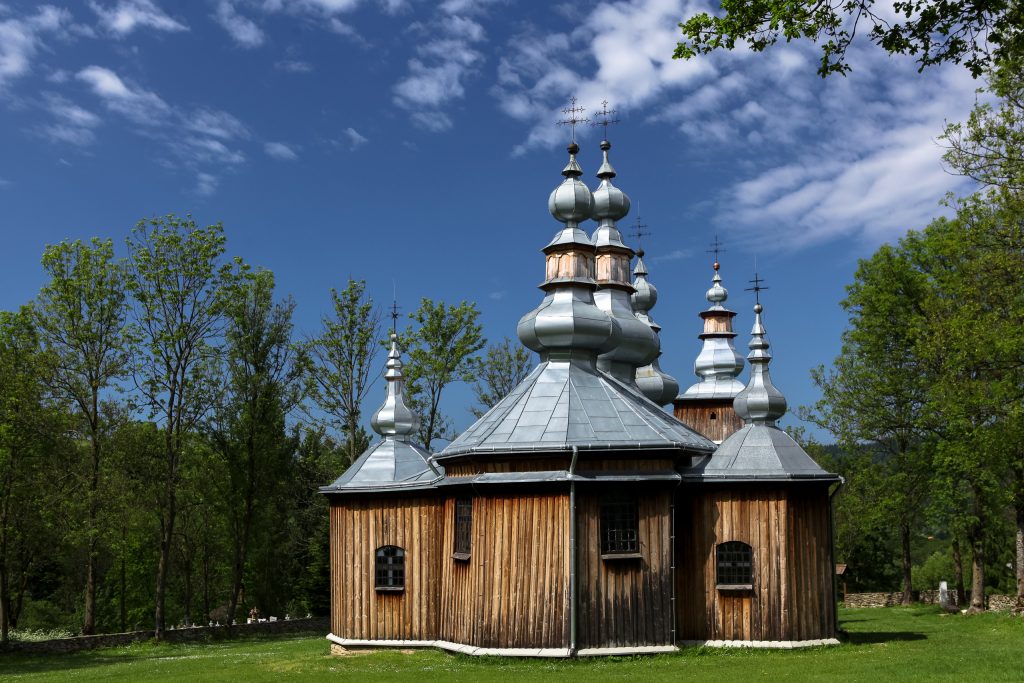
9. Wooden Tserkvas of the Carpathian Region in Poland and Ukraine
Tserkvas built at the turn of the 15thand 16thcenturies are the oldest buildings of their kind preserved in the territory of Polish and Ukrainian Carpathians and a great examples of Lemko and Boyko culture. The UNESCO List includes 16 churches, of which eight are located in the territory of Poland Orthodox churches are the best achievements of the wooden church architecture of their time, they are amazing by the diversity of forms and types, the perfection of carpentry solutions and style – that’s why they stand out against the background of wooden sacred buildings of the rest of Europe.

10. Bialowieza Forest
Bialowieza is the last part of the primeval forest spreading once across all of Europe.
The Bialowieza Forest (Bialowieza National Park) was inscribed on the UNESCO list in 1979. In 1992 the protected area was expanded to include the Belarusian side of the forest, which resulted in the creation of the Transboundary World Heritage Site “Belovezhskaya Pushcha / Białowieża Forest.” The latest decision of the World Heritage Committee from 2014 extended the protected area to 141 thousand hectares on both sides of the border. The total area inscribed on the list, including the buffer zone, is currently over 308 thousand hectares. The protected area also received a new name, being called Transboundary World Heritage Site Białowieża Forest. The Białowieża National Park is home to the world’s largest population of the European bison.
11. Kalwaria Zebrzydowska: the Mannerist Architectural and Park Landscape Complex and Pilgrimage Park
The sanctuary in Kalwaria Zebrzydowska was established at the beginning of the 17thcentury being modelled on the Way of the Cross in Jerusalem. The construction was initiated by Mikołaj Zebrzydowski – the voivode of Cracow. The complex consists of a Baroque basilica with a miraculous image of the Mother of God of Calvary, a monastery, as well as Baroque and Mannerist churches and chapels. All the stuructures and symbolic places of the Passion of Christ and life of the Mother of God have been picturesquely integrated into the Beskid landscape. Tens of thousands of pilgrims keep coming to the sanctuary every year, especially during the Holy Week preceding Easter, and in August on the feast day of the Assumption of the Blessed Virgin Mary.
12. Medieval Town of Toruń
Torun was founded by the Teutonic Order in the 13thcentury. Soon afterwards, as a member of the Hanseatic League, the city developed an important commercial position. In the Old and New Town, imposing buildings from the 14th and 15th centuries (among them the house of Copernicus) are striking evidence of Toruń’s rich past. The layout of the market square and adjacent tenements hasn’t changed for over 700 years. Its 15-metre-high Leaning Tower constructed at the turn of the 13thand 14thcentury is inclined like the famous Tower of Pisa.
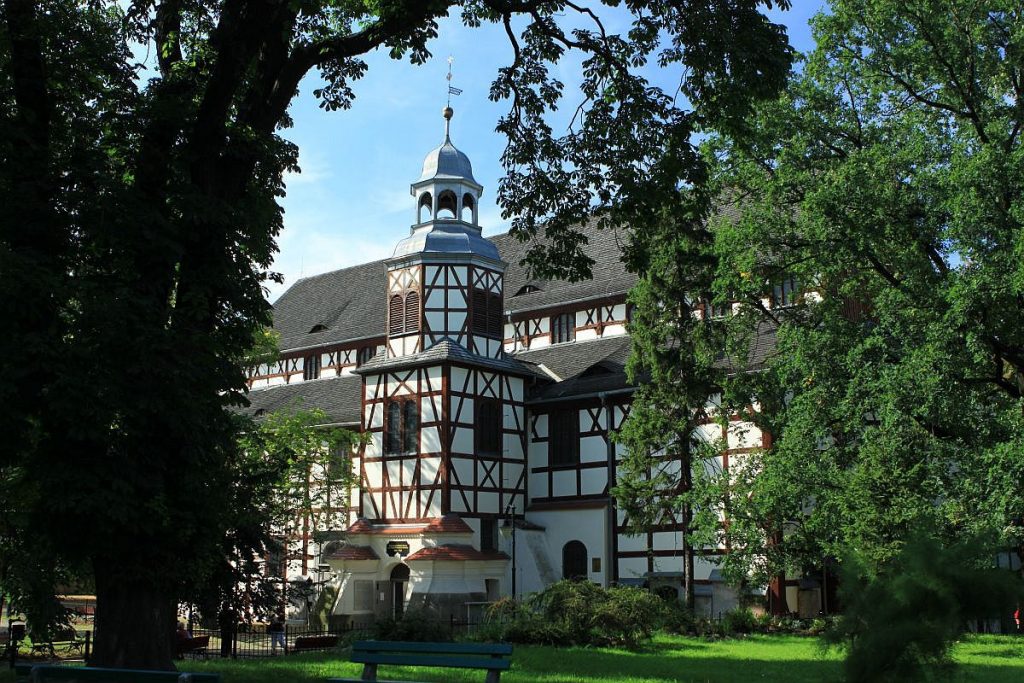
13. Churches of Peace in Jawor and Swidnica
The Churches of Peace in Jawor and Swidnica are the surviving two of three Protestant temples built in Silesia in the 17thcentury, and the largest timber-framed religious buildings in Europe. The churches were built under the Peace of Westphalia from 1648, as the Protestants in Silesia had all their churches taken away from them following their defeat in the Thirty Years War (1618-48).Built from wood and clay, without any towers, the churches amaze with the splendor of their interiors. Of particular beauty are the richly decorated matronea – galleries for Protestant nobility. The church in Swidnica can house 7,500 people, and the one in Jawor – 6,000 people.
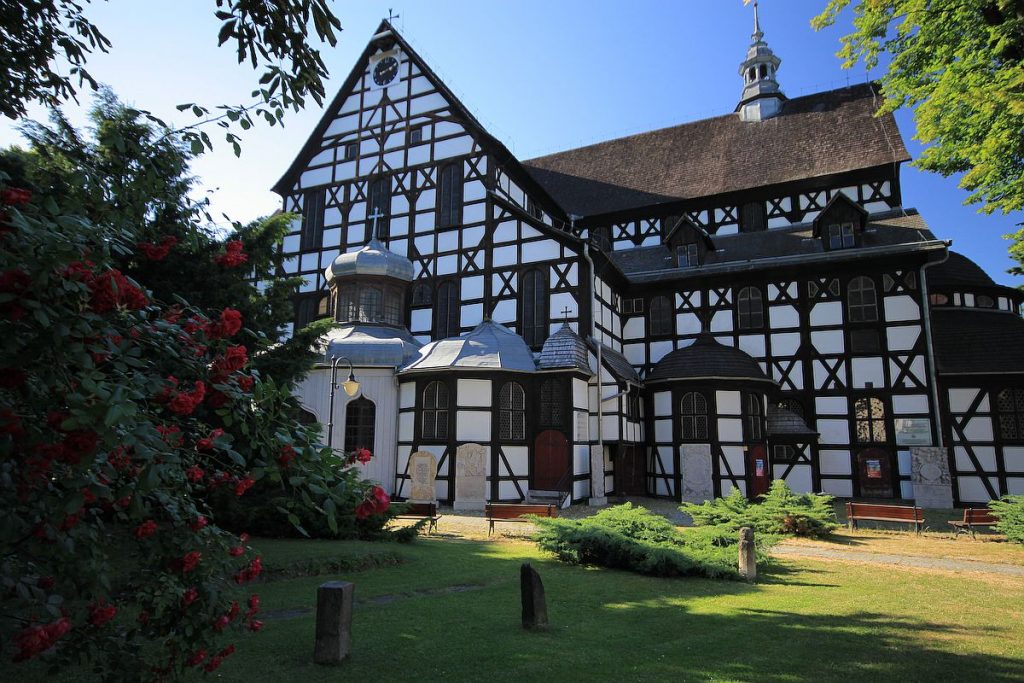

14. Centennial Hall in Wroclaw
One of the 10 most important examples of 20th-century modernism according to the American Getty Foundation, the Centennial Hall is one of the major monuments of Wrocław.
The hall was built between 1911 and 1913 by architect Max Berg on the premises of the Centenary Exhibition as a a multi-purpose recreational building. A true breakthrough in the history of architecture, the structure was built on a circular plan with four apses using reinforced concrete. It houses a cylindrical audience with a capacity of approx. 6,000 people. The dome is 23 meters high and is topped with a steel and glass lantern.

15. Tarnowskie Góry Lead-Silver-Zinc Mine
The mine is an extraordinary example of a large-scale mining complex consisting of 50 km of drainage tunnels, over 100 km of access tunnels and numerous chambers and shafts covering an area of 38 square km. It is one of the largest and best preserved metal ore mines in the world. The mine is located on the Silesian plateau in the southern part of Poland – Europe’s traditionally metalogenic provinces.
16. Krzemionki prehistoric striped flint mining region
The prehistoric mining region in Krzemionki Opatowskie is located on the north-eastern edge of the Swietokrzyskie Mountains. Flint mines from the Neolithic to early bronze ages between 3900 BC and 1600 BC,. The Krzemionki Complex is one of the largest remnants of the prehistoric industrial archaeological heritage known to humanity. Its uniqueness lies in the distinct preservation of traces of prehistoric human activity, focused on the extraction and processing of flint in a huge area.
More and more Polish cities are joining the UNESCO Creative Cities Network. Cracow – the UNESCO City of Literature – chairs the Steering Committee of the Creative Cities Network and acts as a representative of the Cities of Literature on this Committee.Katowice – the City of Music – is the first City of Music from Central and Eastern Europe. Łódź – the City of Film – joined the UNESCO Creative Cities Network in 2017 as the third Polish city with its world-famous film school.
17 objects from the World Remembrance List are stored in Poland. Each document and collection constitutes a separate chapter in Polish history.
Collections include: a hand-written copy Nicolaus Copernicus’ most famous book “De revolutionibus”, stored at the Jagiellonian Library in Cracow, unique collections of manuscripts by Frideric Chopin stored at the National Library and the Fryderyk Chopin Institute, as well as the underground archive of the Warsaw Ghetto (Ringelblum Archive), stored at the Jewish Historical Institute.





